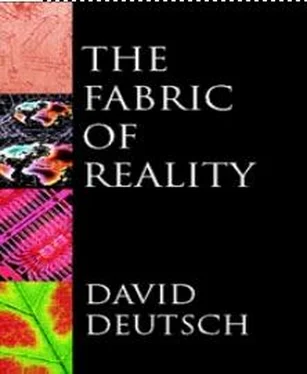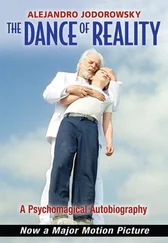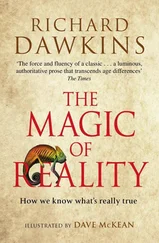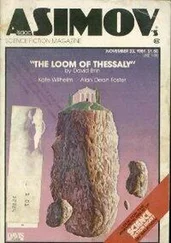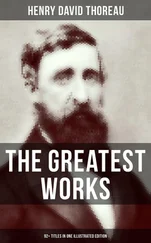David Deutch - The Fabric of Reality
Здесь есть возможность читать онлайн «David Deutch - The Fabric of Reality» весь текст электронной книги совершенно бесплатно (целиком полную версию без сокращений). В некоторых случаях можно слушать аудио, скачать через торрент в формате fb2 и присутствует краткое содержание. ISBN: , Жанр: Физика, Философия, на английском языке. Описание произведения, (предисловие) а так же отзывы посетителей доступны на портале библиотеки ЛибКат.
- Название:The Fabric of Reality
- Автор:
- Жанр:
- Год:неизвестен
- ISBN:0-7139-9061-9
- Рейтинг книги:4 / 5. Голосов: 2
-
Избранное:Добавить в избранное
- Отзывы:
-
Ваша оценка:
- 80
- 1
- 2
- 3
- 4
- 5
The Fabric of Reality: краткое содержание, описание и аннотация
Предлагаем к чтению аннотацию, описание, краткое содержание или предисловие (зависит от того, что написал сам автор книги «The Fabric of Reality»). Если вы не нашли необходимую информацию о книге — напишите в комментариях, мы постараемся отыскать её.
The Fabric of Reality — читать онлайн бесплатно полную книгу (весь текст) целиком
Ниже представлен текст книги, разбитый по страницам. Система сохранения места последней прочитанной страницы, позволяет с удобством читать онлайн бесплатно книгу «The Fabric of Reality», без необходимости каждый раз заново искать на чём Вы остановились. Поставьте закладку, и сможете в любой момент перейти на страницу, на которой закончили чтение.
Интервал:
Закладка:
They tell us what time travel would look like if it did occur. They tell us that past-directed time travel would inevitably be a process set in several interacting and interconnected universes. In that process, the participants would in general travel from one universe to another whenever they travelled in time. The precise ways in which the universes were connected would depend, among other things, on the participants’ states of mind.
So, for time travel to be physically possible it is necessary for there to be a multiverse. And it is necessary that the physical laws governing the multiverse be such that, in the presence of a time machine and potential time travellers, the universes become interconnected in the way I have described, and not in any other way. For example, if I am not going to use a time machine come what may, then no time-travelling versions of me must appear in my snapshot; that is, no universes in which versions of me do use a time machine can become connected to my universe. If I am definitely going to use the time machine, then my universe must become connected to another universe in which I also definitely use it. And if I am going to try to enact a ‘paradox’ then, as we have seen, my universe must become connected with another one in which a copy of me has the same intention as I do, but by carrying out that intention ends up behaving differently from me. Remarkably, all this is precisely what quantum theory does predict. In short, the result is that if pathways into the past do exist, travellers on them are free to interact with their environment in just the same way as they could if the pathways did not lead into the past. In no case does time travel become inconsistent, or impose special constraints on time travellers’ behaviour.
That leaves us with the question whether it is physically possible for pathways into the past to exist. This question has been the subject of much research, and is still highly controversial. The usual starting-point is a set of equations which form the (predictive) basis of Einstein’s general theory of relativity, currently our best theory of space and time. These equations, known as Einstein’s equations, have many solutions, each describing a possible four-dimensional configuration of space, time and gravity. Einstein’s equations certainly permit the existence of pathways into the past; many solutions with that property have been discovered. Until recently, the accepted practice has been systematically to ignore such solutions. But this has not been for any reason arising from within the theory, nor from any argument within physics at all. It has been because physicists were under the impression that time travel would ‘lead to paradoxes’, and that such solutions of Einstein’s equations must therefore be ‘unphysical’. This arbitrary second-guessing is reminiscent of what happened in the early years of general relativity, when the solutions describing the Big Bang and an expanding universe were rejected by Einstein himself. He tried to change the equations so that they would describe a static universe instead. Later he referred to this as the biggest mistake of his life, and the expansion was verified experimentally by the American astronomer Edwin Hubble. For many years also, the solutions obtained by the German astronomer Karl Schwarzschild, which were the first to describe black holes, were mistakenly rejected as ‘unphysical’. They described counter-intuitive phenomena, such as a region from which it is in principle impossible to escape, and gravitational forces becoming infinite at the black hole’s centre. The prevailing view nowadays is that black holes do exist, and do have the properties predicted by Einstein’s equations.
Taken literally, Einstein’s equations predict that travel into the past would be possible in the vicinity of massive, spinning objects, such as black holes, if they spun fast enough, and in certain other situations. But many physicists doubt that these predictions are realistic. No sufficiently rapidly spinning black holes are known, and it has been argued (inconclusively) that it may be impossible to spin one up artificially, because any rapidly spinning material that one fired in might be thrown off and be unable to enter the black hole. The sceptics may be right, but in so far as their reluctance to accept the possibility of time travel is rooted in a belief that it leads to paradoxes, it is unjustified.
Even when Einstein’s equations have been more fully understood, they will not provide conclusive answers on the subject of time travel. The general theory of relativity predates quantum theory and is not wholly compatible with it. No one has yet succeeded in formulating a satisfactory quantum version — a quantum theory of gravity. Yet, from the arguments I have given, quantum effects would be dominant in time-travelling situations. Typical candidate versions of a quantum theory of gravity not only allow past-directed connections to exist in the multiverse, they predict that such connections are continually forming and breaking spontaneously. This is happening throughout space and time, but only on a sub-microscopic scale. The typical pathway formed by these effects is about 10 –35metres across, remains open for one Planck time (about 10 –43seconds), and therefore reaches only about one Planck time into the past.
Future-directed time travel, which essentially requires only efficient rockets, is on the moderately distant but confidently foreseeable technological horizon. Past-directed time travel, which requires the manipulation of black holes, or some similarly violent gravitational disruption of the fabric of space and time, will be practicable only in the remote future, if at all. At present we know of nothing in the laws of physics that rules out past-directed time travel; on the contrary, they make it plausible that time travel is possible. Future discoveries in fundamental physics may change this. It may be discovered that quantum fluctuations in space and time become overwhelmingly strong near time machines, and effectively seal off their entrances (Stephen Hawking, for one, has argued that some calculations of his make this likely, but his argument is inconclusive). Or some hitherto unknown phenomenon may rule out past-directed time travel — or provide a new and easier method of achieving it. One cannot predict the future growth of knowledge. But if the future development of fundamental physics continues to allow time travel in principle, then its practical attainment will surely become a mere technological problem that will eventually be solved.
Because no time machine provides pathways to times earlier than the moment at which it came into existence, and because of the way in which quantum theory says that universes are interconnected, there are some limits to what we can expect to learn by using time machines. Once we have built one, but not before, we may expect visitors, or at least messages, from the future to emerge from it. What will they tell us? One thing they will certainly not tell us is news of our own future. The deterministic nightmare of the prophecy of an inescapable future doom, brought about in spite of — or perhaps as the very consequence of — our attempts to avoid it, is the stuff of myth and science fiction only. Visitors from the future cannot know our future any more than we can, for they did not come from there. But they can tell us about the future of their universe, whose past was identical to ours. They can bring taped news and current affairs programmes, and newspapers with dates starting from tomorrow and onwards. If their society made some mistaken decision, which led to disaster, they can warn us of it. We may or may not follow their advice. If we follow it, we may avoid the disaster, or — there can be no guarantees — we may find that the result is even worse than what happened to them.
Читать дальшеИнтервал:
Закладка:
Похожие книги на «The Fabric of Reality»
Представляем Вашему вниманию похожие книги на «The Fabric of Reality» списком для выбора. Мы отобрали схожую по названию и смыслу литературу в надежде предоставить читателям больше вариантов отыскать новые, интересные, ещё непрочитанные произведения.
Обсуждение, отзывы о книге «The Fabric of Reality» и просто собственные мнения читателей. Оставьте ваши комментарии, напишите, что Вы думаете о произведении, его смысле или главных героях. Укажите что конкретно понравилось, а что нет, и почему Вы так считаете.
